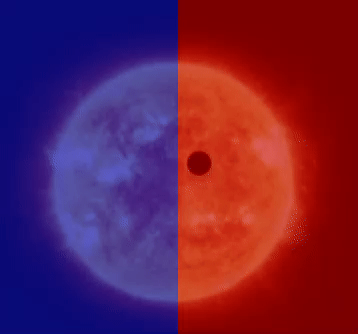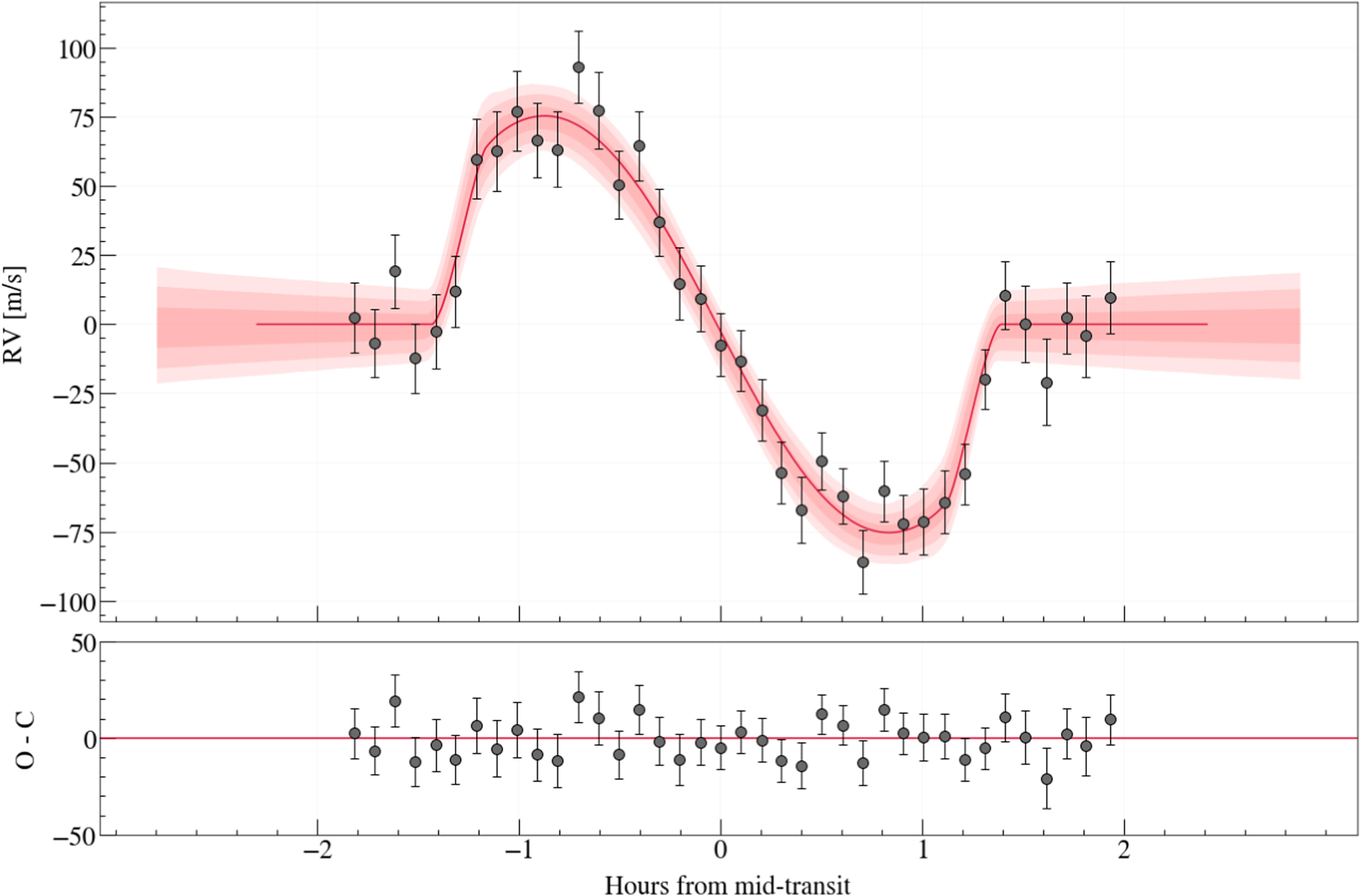Measuring the obliquities of different transiting populations
On the observational side, my research focuses on measuring stellar obliquities (a.k.a spin-orbit misalignment) for different populations of transiting exoplanets. To do that, I use observations of the Rossiter-Mclaughlin (RM) effect taken with state-of-the-art-spectrographs on large telescopes.

The RM effect is a spectroscopic phenomenon observed when a planet transits in front of its host star, blocking part of the stellar surface. As the planet moves across the star, it temporarily blocks regions of the stellar disk with different rotational velocities due to the star's rotation. This causes an apparent anomaly in the radial velocity measurements: a blue shift as the planet blocks the approaching limb, and a red shift as it blocks the receding limb. The exact shape of this effect depends on the sky-projected obliquity (λ). By measuring the radial velocities during transits, the RM provides insights into the alignment between the star's rotation axis and the planet's orbital axis, offering clues about the system's dynamical history and evolution.
Using ESPRESSO observations, I have measured the sky-projected obliquity of the super eccentric $(e = 0.72)$ proto hot Jupiter TOI-3362 b. I found this planet is perfectly aligned with its host star, having $\lambda=1.2\pm2.2^{\circ}$.
